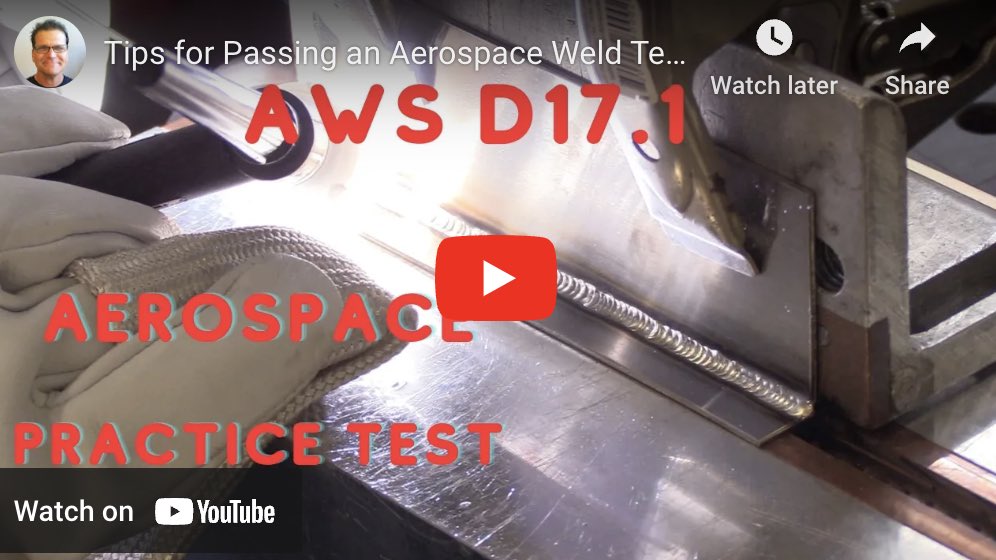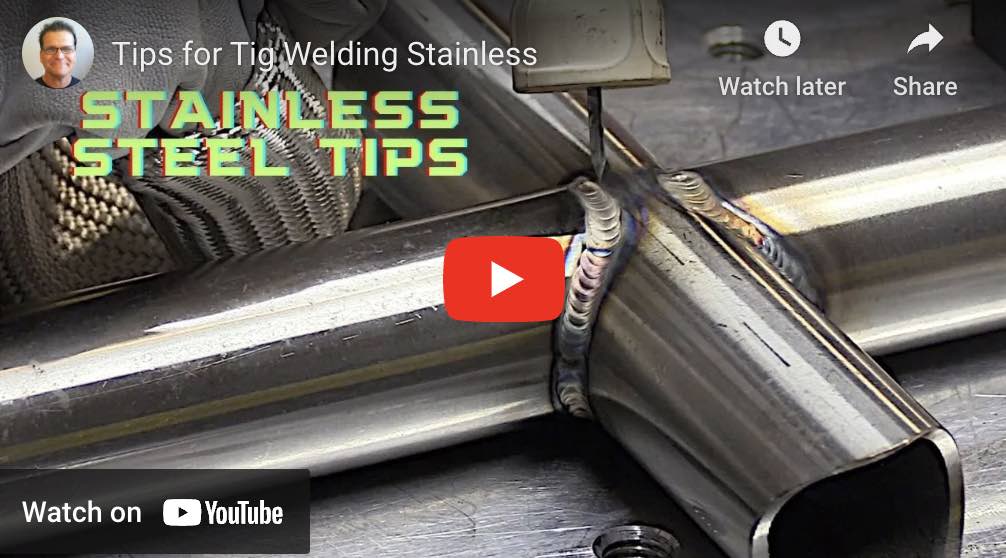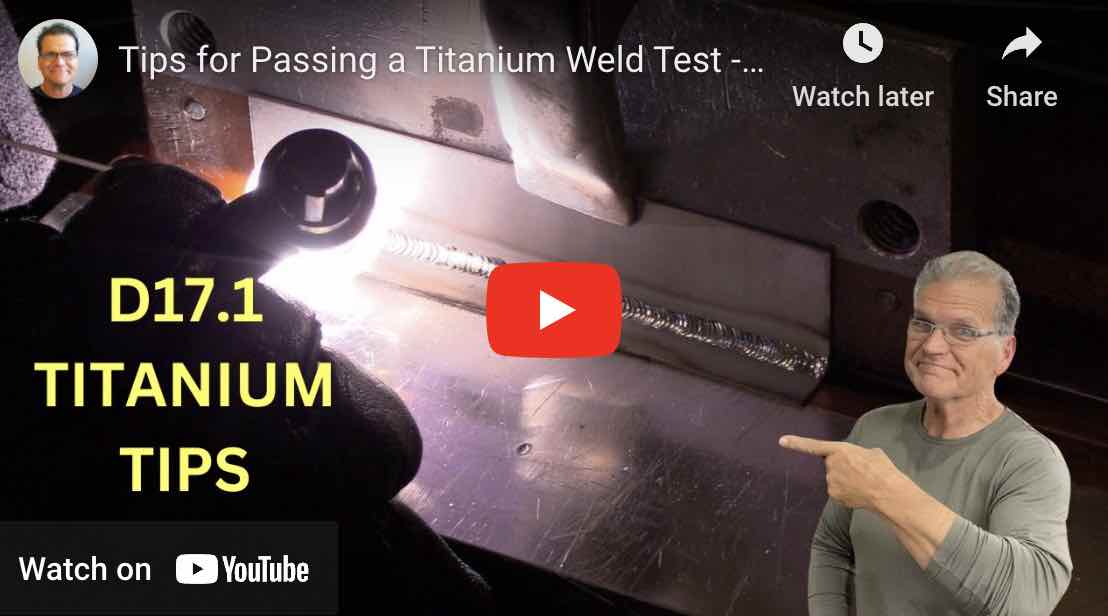Tips for Passing a D17 Stainless Tee joint weld test
The first video above shows tips for passing a AWS D17.1 stainless tee joint fillet weld test
A tee joint is normally considered to be an easier weld test than a butt joint.
But for an aerospace weld test on .063” and thinner, the tolerances for lack of fusion as well as melt thru are so stringent that tee joints can be more difficult than butt joints.
When you get down to thinner metals like around .040” and thinner, there is a pretty tight window of amperage, travel speed, and filler metal dabbing that will get fusion into the root with no melt thru.
The cup you use can make a tremendous difference in the way the puddle flows at low amperage. An oxide free puddle flows better than a dirty oxidized puddle.
A cup that completely shields the puddle along with the hot tip of the filler rod makes a big difference on alloys like 15-7ph and 17-7ph stainless.
And as you can plainly see in the video above, also works great in preventing any discoloration on any stainless steel alloy.
Changes in AWS D17.1 compared to the older MIL STD 1595a
The specification for aerospace welding certification used to be MIL STD 1595a but that mil std was replaced by AWS D17.1
On test welds .063” and thinner the mil standard 1595a allowed lack of fusion in fillet weld tests that was .3 times or less than the actual throat size.
The AWS D17.1 specification only allows a maximum of .1 times the leg size
There were already plenty of failures with the mil std 1595a acceptance criteria on certain alloys…with aluminum having more failures by far than other alloys.
When AWS D17.1 specification superseded mil standard 1595a, companies struggled with much higher failure rates due to the more stringent criteria.
In my experience all this change did was make test administrators use different fixtures and teach different techniques that did not translate over to the welding of actual parts. Especially not in the repair and overhaul world where crack repair, and dimensional restoration make up a large portion of welding tasks.
I was on the D17.1 committee for a while when all this was being hashed out and let me tell you, it was a quite learning experience ….and also a soup sandwich..
But in the end, the D17.1 specification is not likely to change the lack of fusion criteria anytime soon so I hope the tips shown in the video at the top of this page will help you if you have an aerospace weld test in your future.
Tips for passing a Titanium Tee Joint Aerospace test per D17.1
If you watch both of the videos on this page, you will notice the technique is very similar for both stainless and titanium.
Except for titanium, the movement back and forth is just a bit more pronounced in order to flow the metal into the root of the joint without melting thru the back side.



















